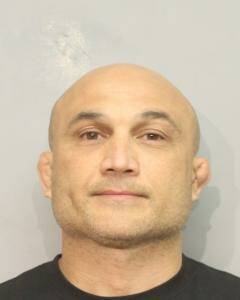Remembering Willie Mays as both untouchable and human
At the end, the Say Hey Kid looked nothing like the extraordinary force who had been at the center of the American imagination for much of the 20th century.
The Kid — Willie Mays — struggled at the plate and stumbled on the base paths. A line drive arced his way, easily catchable for Mays during most of his career. But he fell. Another outfield mistake caused the game to be tied in the ninth inning.
ADVERTISING
He was a creaky-kneed 42 years old on that October afternoon, Game 2 of the 1973 World Series — Mays’ New York Mets in Oakland facing the A’s. On the grandest stage, the ravages of time had settled upon the game’s most gilded star.
That he would redeem himself at the plate three innings later is often forgotten. The unthinkable had happened. Mays had not only failed, he had appeared lost, clumsy and out of sorts.
The shock of seeing him that way would linger long past his playing days as a warning: Don’t be like Willie Mays, sticking around too long, stumbling in center field, a shadow of his former self. Such became the axiom, uttered in so many words by everyone from politicians to business leaders to commentators weighing in on great athletes who yearn to play into their twilight.
Quit before it is too late.
In retirement, Mays, who died on Tuesday at 93, did his best to ignore the game that would be his last. But there is another way to view its echoes.
The profound way that Mays’ struggles stirred powerful emotion is a testament to both his greatness and the grip this son of the Jim Crow South — the sixth Black player in the major leagues, after Jackie Robinson — once held on Americans of every color and creed.
He had been perfect for so long. The shock of seeing baseball get the best of Willie Howard Mays was the shock of seeing a god become mortal.
How great was he?
Six hundred sixty. That is how many home runs bolted off Mays’ bat during his career. When the Say Hey Kid retired, only Babe Ruth had more.
Mays ended 22 major league seasons with a total of 3,283 hits and held a .302 lifetime batting average, eye-popping for a player with such power. Twenty-four times, he was named to the All-Star team. Twelve times, he won the Gold Glove Award. Ten times, he drove in more than 100 runs.
He was named the National League’s MVP twice. If it were not for a need to spread the award among players, some experts say, he could have been the MVP seven more times.
Numbers and accolades tell only part of his story. For it was how Mays played — the way he bent the confines of baseball to his will with his smarts, his speed, his style and his power — that set him apart as the most deeply beloved of stars.
“I don’t know that Willie Mays ever got booed, even in the opposition ballpark,” said Bob Kendrick, president of the Negro Leagues Baseball Museum. “That is how loved he was. He was so likable and affable to people of all backgrounds. Every race.
“Every time he stepped on the field, you knew you would see something special that you likely had never seen before.”
His emergence four seasons after Robinson had broken the major league color barrier in 1947 was perfectly timed.
In 1951, just 10% of American homes had television sets. During Robinson’s prime years, only thin slices of the public could see him play — either from the stands or on TV.
But technology improved, and television sets became more affordable. By 1954, when Mays won his first National League MVP Award, roughly half of American homes had TV sets — and baseball was televised nationally for the first time.
That fall, Mays and his New York Giants stunned Cleveland and won the World Series. Game 1 entered baseball lore because of a play that became known simply as the Catch.
The Catch began with a turbocharged center field sprint, the brown and burnt orange No. 24 on Mays’ back facing home plate as he turned and chased Vic Wertz’s scorching blast into the depths of center field.
How did Mays track the ball clearly enough to see it arc over his shoulder perfectly into his mitt?
How did he have the lucidity to remember that stopping base runners was paramount, or the ability to pirouette and fire a blistering strike to second base?
“This was the throw of a giant,” sports writer Arnold Hano wrote in his dispatch from the game. “The throw of a howitzer made human.”
Mays and the Giants moved west to San Francisco to begin the 1958 season. By then, national baseball broadcasts were commonplace, and almost every American household had a television. Mays seemed to be everywhere.
Unlike the outspoken, at times polarizing, Robinson and other Black stars of the day, Mays steered clear of weighing in on politics and civil rights. Staying above the fray had a benefit: White fans, never offended, idolized him with a fervor few, if any, Black athletes had ever felt.
So it became that his Giants led visiting National League teams in attendance for eight years during the 1960s. And so it became that Mays appeared on national TV talk shows, in comedies and on the covers of the most popular national magazines — Time, Life, Look, Collier’s and, naturally, Sports Illustrated.
Hollywood stars held Mays in awe and weren’t afraid to offer compliments. “If I played baseball like you,” Frank Sinatra gushed, “I’d be the happiest guy in the world.”
When Mays played, he was part of a triumvirate of center field greats. The others were Duke Snider, with the Dodgers, and Mickey Mantle, with the Yankees.
Snider and Mantle were part of the old guard: white players who represented major league baseball as it had been.
Mays was wholly different.
(BEGIN OPTIONAL TRIM.)
“He played in a way unheard-of at the time in the major leagues,” said Harry Edwards, professor emeritus of sociology at the University of California, Berkeley. “It would have been called showboating had Jackie done it.
“But by the time Willie came through, Jackie had cleared that space, and Larry Doby in Cleveland had cleared that space. There was room for the evolution of Black play consistent with the style and the culture within which those players emerged.”
Mays had polished that style as a teenager, barnstorming with the Birmingham Black Barons through the Negro Leagues — where showmanship was viewed as a must.
During his rookie season in the majors, he “would blurt, ‘Say who,’ ‘Say what,’ ‘Say where,’ ‘Say hey,’” said Barney Kremenko, a sports writer for The New York Journal American. “In my paper, I tabbed him the Say Hey Kid. It stuck.”
“Say hey” was part of his style. So were his throws from every imaginable angle. His basket catches. His daring forays on the base paths. And his hat, which fit just a little small so it would fly off with every sprint and highlight his speed.
Mays buffed his fingernails, always wanting to look good. And then there was his smooth, powerful, sweeping swing, worthy of Rembrandt.
(END OPTIONAL TRIM.)
A certain kind of grimness is common to modern athletes. But when Mays walked onto the field, it looked as if there was nowhere else he belonged, nowhere else he would rather be.
“You would stay on the bench during batting practice simply to watch him — and just watching him walk, even that was special,” said Cleon Jones, who grew up in Alabama idolizing Mays and ended up sharing the outfield with him when the Giants traded Mays to the Mets in 1972.
“I’m telling you, even his uniform seemed to fit better than everybody else’s uniform,” Jones said. “The players held him with a reverence that felt almost spiritual.”
Nobody wanted to see a god failing in twilight.
By then, the end loomed.
“He was badly injured,” recalled Jones, whose locker was next to Mays’. “That knee looked like a watermelon. I would tell him, ‘Take a day off,’ but he wouldn’t. He didn’t want to let the team down. He couldn’t function, but he never said no.
“I could see he had no business being in that lineup, no business playing, but Willie went out there. He felt he owed so much to the fans.”
In that fateful second game of the 1973 World Series, in which the Mets played the A’s in Oakland, Willie Mays came off the bench to relieve Rusty Staub as a pinch-runner.
First he fell rounding second base.
Then came the outfield blunder, as he ran to catch the bullet line drive and fell again. And then another clumsy fielding mistake.
“This is the thing I think all sports fans in all areas hate to see,” intoned Tony Kubek, announcing the game on national television. “One of the greats, playing in his last years, having this kind of trouble, standing up and falling down.”
To all of us, it was a gut punch
But what is often forgotten — and what we should choose to remember — is that in this World Series game, Mays stood up one more time.
In the 12th inning, with the sun fading, with the score at 6-6 and with two men on base and two out, the A’s pitcher, Rollie Fingers, commanded the mound. Mays dug in at the plate.
The pitcher coiled. He kicked his left leg high and unfurled a fastball — stiff, straight and down the middle.
Mays swung and rapped the ball hard. It bounced over the mound, glanced past second base and caromed into the outfield.
That was the last hit in a career for all careers, and it put the Mets in front for good, though they would eventually lose the series in seven games.
Perched in the Oakland press box, Red Smith pounded out his column for The New York Times.
“Never another like him,” Smith wrote. “Never in this world.”
And never will there be.
© 2024 The New York Times Company





